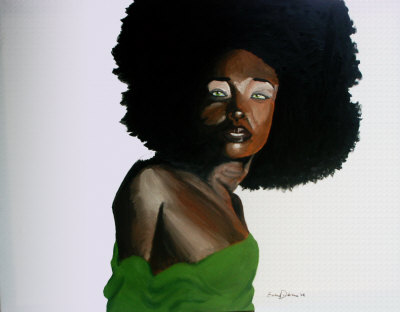Part 3
Spanish interest in Espanola began to wane in the 1520s, as more lucrative gold and silver deposits were found in Mexico and South America. Thereafter, the population of Spanish Espanola grew slowly. Fearful of pirate (buccaneers) attacks, the king of Spain in 1606 ordered all colonists on Espanola to move closer to the capital city, Santo Domingo. The decision backfired, as British, Dutch, and French pirates then established bases on the island's abandoned northern and western coasts
In 1664, the newly established French West India Company took control over the colony, which it named Saint-Domingue, and France formally claimed control of the western portion of the island of Espanola. In 1670 they established the first permanent French settlement on the mainland of Espanola, Cap François (later Cap Français, now Cap-Haïtien).
Under the 1697 Treaty of Ryswick, Spain officially ceded the western third of Espanola to France. By that time, planters outnumbered buccaneers and, with the encouragement of Louis XIV, they had begun to grow tobacco, indigo, cotton, and cacao on the fertile northern plain, thus prompting the importation of African slaves. Slave insurrections were frequent and some slaves escaped to the mountains where they were met by what would be one of the last generations of Taíno natives. After the last Taíno died, the full-blooded Arawakan population on the island was extinct.
Prior to the Seven Years' War (The Seven Years' War was a major military conflict that lasted from 1756, as a result of the French and Indian War that erupted in North America in 1754, ), the economy of Saint-Domingue gradually expanded, with sugar and, later, coffee becoming important export crops. Saint-Domingue became known as the "Pearl of the Antilles" – one of the richest colonies in the 18th century French empire. By the 1780s, Saint-Domingue produced about 40 percent of all the sugar and 60 percent of all the coffee consumed in Europe. This single colony, roughly the size of Maryland or Belgium, produced more sugar and coffee than all of Britain's West Indian colonies combined
However, the inability to maintain slave numbers without constant resupply from Africa meant the slave population, by 1789, totaled 500,000, ruled over by a white population that, by 1789, numbered only 32,000.[3] At all times, a majority of slaves in the colony were African-born, as the brutal conditions of slavery prevented the population from experiencing growth through natural increase[4]. African culture thus remained strong among slaves to the end of French rule, in particular the folk-religion of Vodou, which commingled Catholic liturgy and ritual with the beliefs and practices of Guinea, Congo, and Dahomey.[
To regularize slavery, in 1685 Louis XIV enacted the Code Noir, which accorded certain human rights to slaves and responsibilities to the master, who was obliged to feed, clothe, and provide for the general well-being of their slaves. The code noir also sanctioned corporal punishment, allowing masters to employ brutal methods to instill in their slaves the necessary docility, while ignoring provisions intended to regulate the administration of punishments.
Saint-Domingue also had the largest and wealthiest free population of color in the Caribbean, the gens de couleur (French, "people of color"). The mixed-race community in Saint-Domingue numbered 25,000 in 1789. First-generation gens de couleur were typically the offspring of a male, French slaveowner and an African slave chosen as a concubine
As numbers of gens de couleur grew, the French rulers enacted discriminatory laws. Statutes forbade gens de couleur from taking up certain professions, marrying whites, wearing European clothing, carrying swords or firearms in public, or attending social functions where whites were present. However, these regulations did not restrict their purchase of land, and many accumulated substantial holdings and became slave-owners. By 1789, they owned one-third of the plantation property and one-quarter of the slaves of Saint-Domingue
Monday, January 18, 2010
Subscribe to:
Post Comments (Atom)



No comments:
Post a Comment